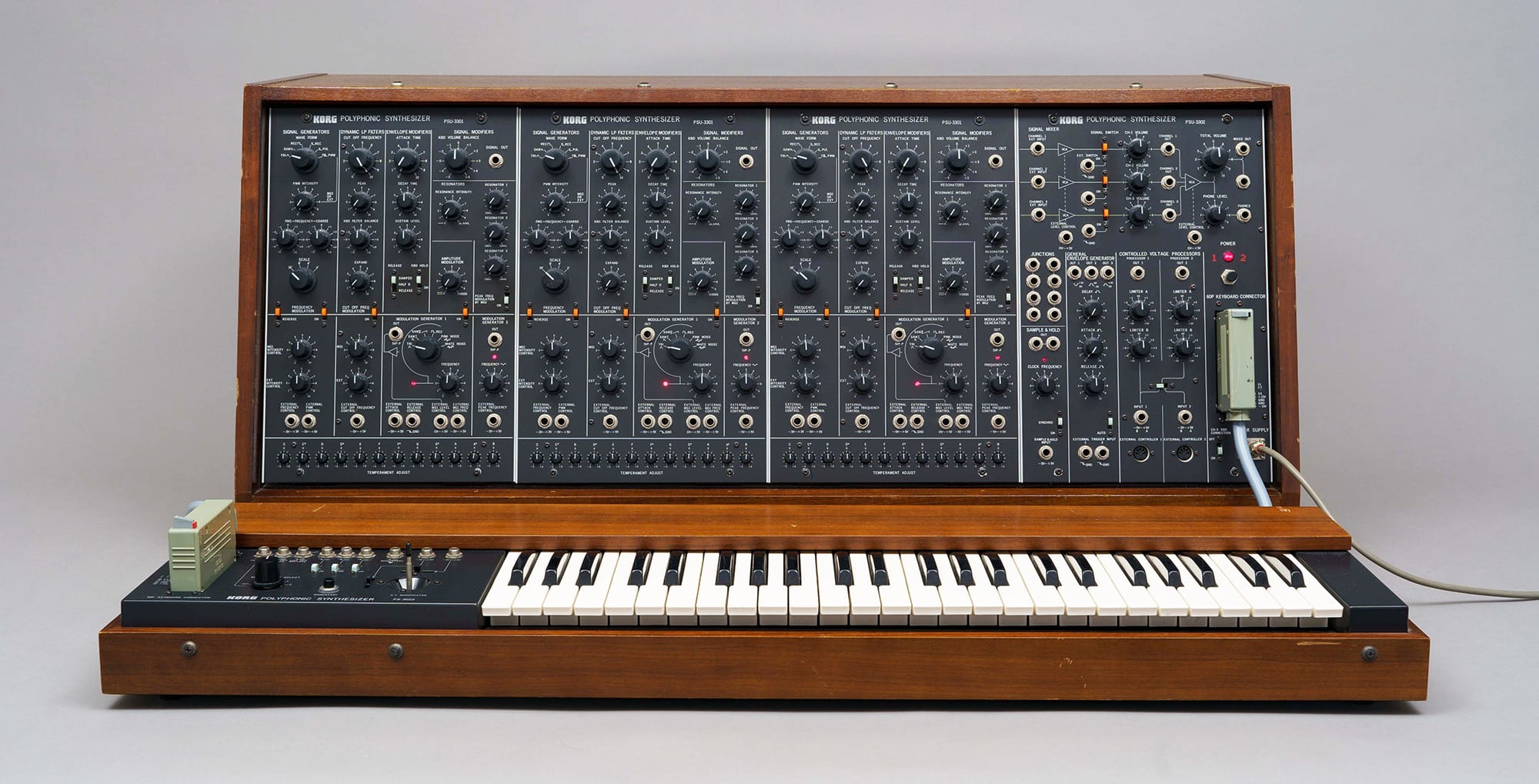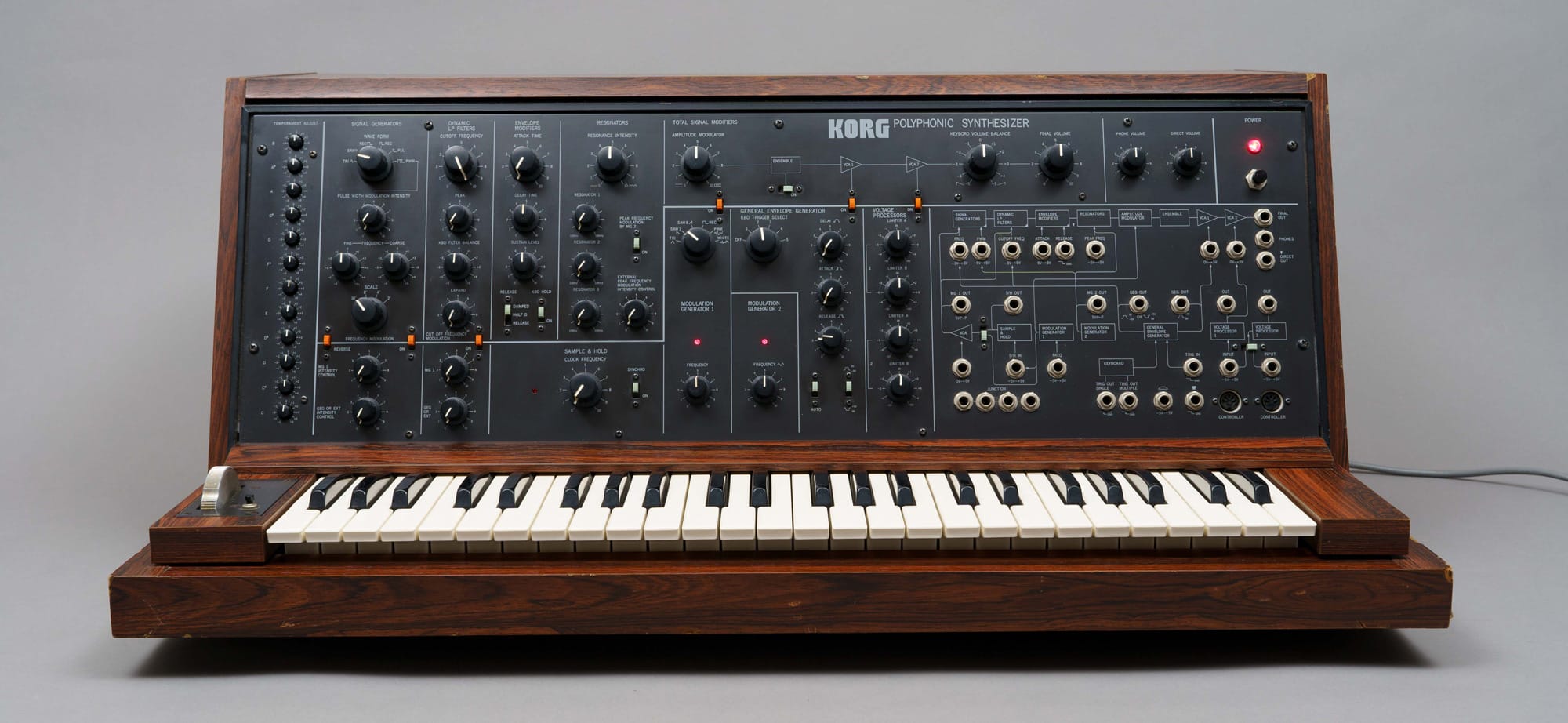
Released in 1977, Korg’s PS‑3100 broke new ground with its fully polyphonic architecture – 48 complete voices, one per key. It paved the way for the mighty PS‑3300: a triple-engine synth that became a legend. Decades later, while Korg has recently reissued the 3300, Cherry Audio now brings its spirit to your computer.
The mighty evolution of polyphony
In the late 1970s, Korg set out to conquer polyphony in synthesis — not with clever shortcuts or shared circuitry, but with sheer analog muscle. The PS-3100, introduced in 1977, was their answer: a synth with 48 independent voice circuits, one per key, each with its own oscillator, filter, envelope, and resonators.

Unlike most polysynths that used paraphonic structures or voice-stealing methods, the PS-3100 delivered true polyphony by duplicating the full signal path 48 times. It used a divide-down oscillator system — similar in concept to string machines like the Eminent 310 — but assigned each note its own path instead of summing them into a shared output. The result was a warm, detailed, and clear analog sound that preserved dynamics across all notes, regardless of how dense the chords were.
Each voice ran through a Dynamic Low Pass Filter, followed by an Envelope Modifier — essentially an ADSR controlling both amplitude and note triggering — and then through three Resonators, offering rich modulation and tone shaping. After all voices were generated, they passed through global functions including Amplitude Modulation, Ensemble (chorus), and dual VCAs, with further modulation from onboard patchable tools like LFOs, Sample & Hold, and voltage processors.
This architecture, while powerful, was only the beginning.






